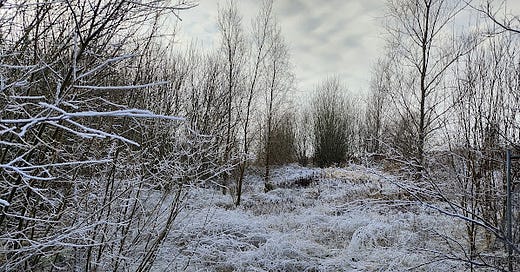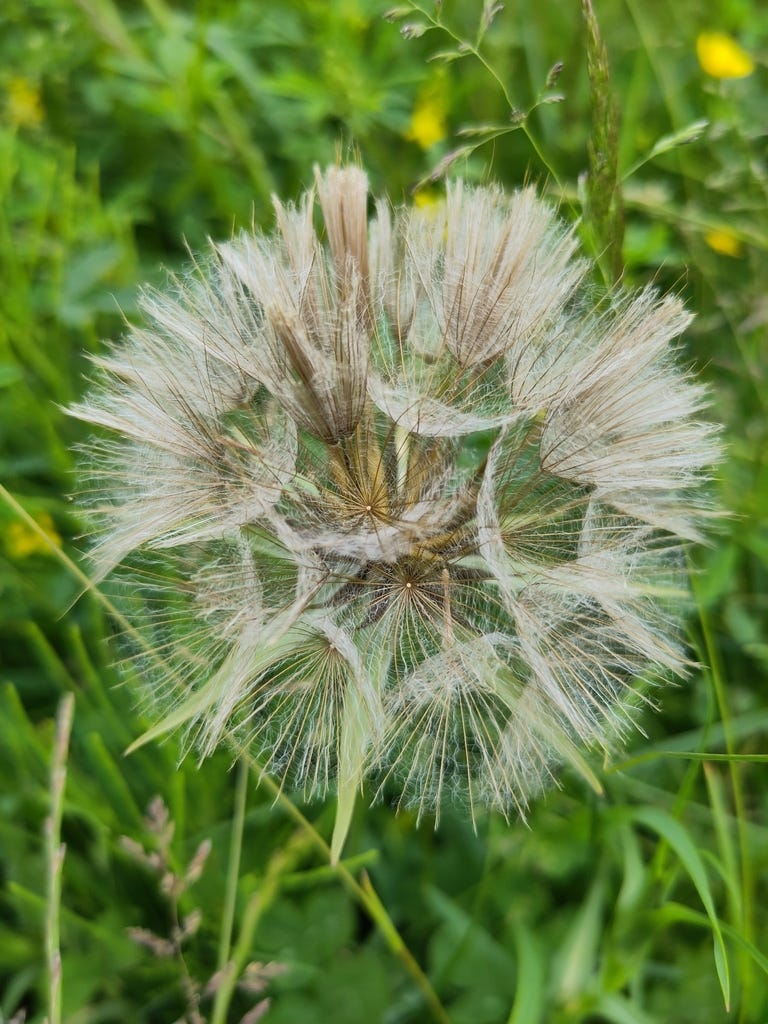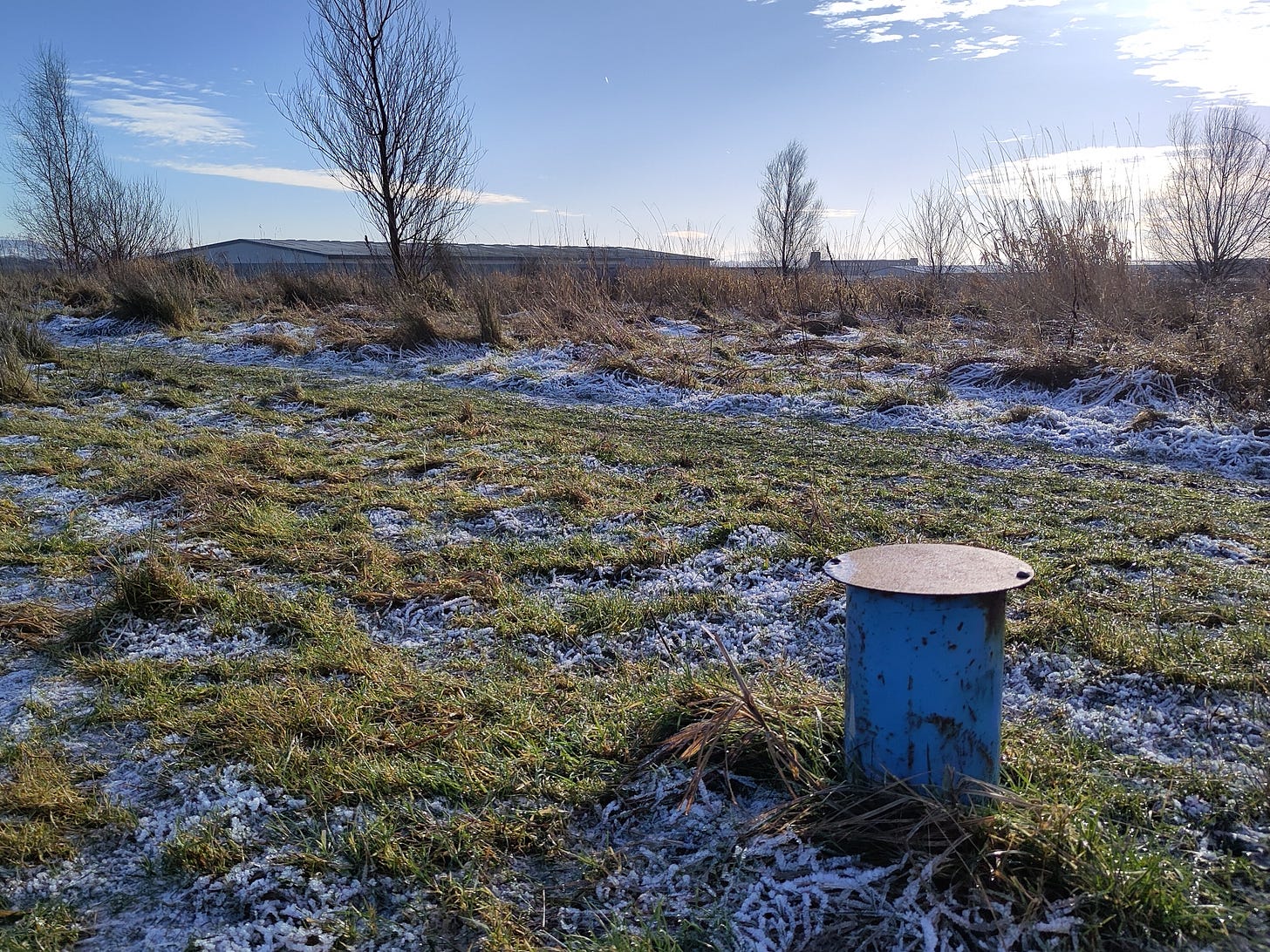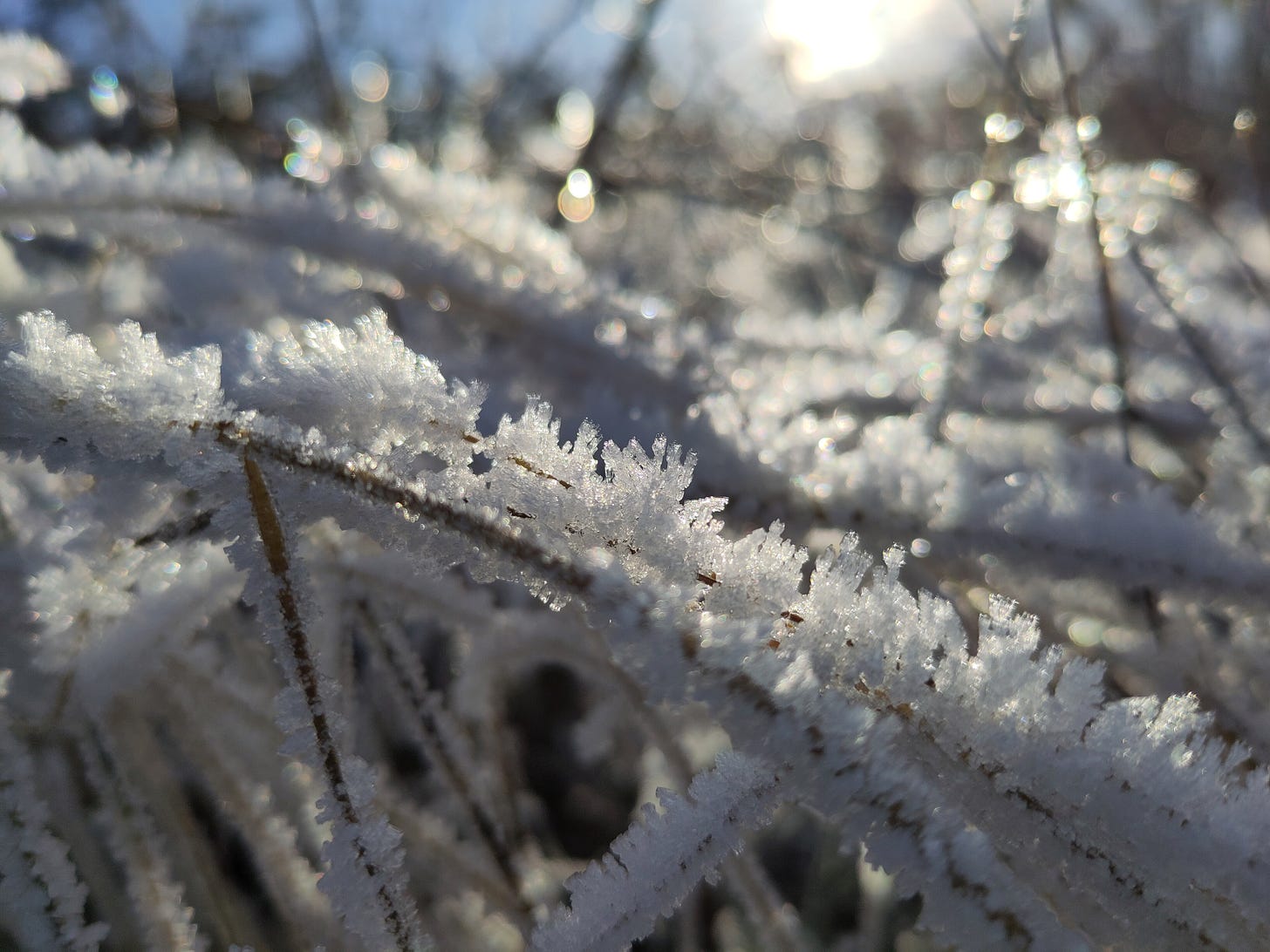I love being up Ashton Moss. It’s where I go to think because it always feels so full of life. Though, given its history, it really shouldn’t.
In trying to foster a stronger relationship with land, we (as in Myco) have often sought out the greener spaces in Greater Manchester that aren’t, on the surface, the most beautiful, remote or diverse. Often they’re fly-tipped, neglected and denuded. Land with the enchantment ripped from it, flanked and encroached by development. We do this because we’re keen to show that there’s ecology everywhere, in spite of the destruction. That nature isn’t something separate and elsewhere, but the entire world we inhabit. And life does burst through every single seam. It’s a kind of miracle. So learning to see that life, what it’s doing and what that means, is surely a crucial skill for building deeper relationship.
Ashton Moss is a strip of land that sits between Droylsden, Audenshaw and Ashton-under-Lyme, on the Manchester side of Tameside. If you’ve never been, its accessible by tram, the stop has the same name. It’s not heralded in any way though, you’ve just got to explore Rayner Lane, behind the tram stop. The M60 slices the moss in half, and because what’s left is mostly elevated, it’s often confusingly loud with traffic sounds drifting up from the roads. Sometimes the wind will blow the right way and you’ll hear a conversation drift over the main road from the Hollywood Bowl. But it does also feel like a sanctuary, a little moor above the nonsense of sprawling retail. I’ve found plants up there that you would struggle to see in many of Manchester’s more managed green spaces. There’s an abundance of fabids, pea family plants, in the summer months. Vetch, tare, gorse and broom, vetchlings and trefoils. The gorgeous geodesic composite pappus of Goat’s-Beard. Ragged yellow St Johns’ Worts and cinquefoils like lost coins. You see flocks of great tits and hear the chiff-chaffs too, more birds than I’m used to at the bottom of the hill.
I even found a bee orchid there once. The presence of orchids is dependent on soil being healthy and fertiliser-free enough for mycorrhizal associations to form. Orchids won’t germinate without them. So a really good thing.
The day I found that orchid, I was crawling around on the ground, trying to get a good quality photo for iNaturalist when a dog-walker caught me. The strange thing about Ashton Moss it it’s mostly fenced-off, but no-one cares. It’s like a mass trespass that no-one thinks twice about. A bridlepath gives you right of way across the moss, but its flanked on both sides by construction fencing. Unsurprisingly, the fence has been broken open in multiple places and never gets repaired.
Unlike many dog-walkers, this guy wasn’t scared off by a trans woman with her elbows in the mud, muttering with a flower. We struck up a conversation and I explained what I was doing biological recording, and he told me a history of the moss.
According to him, the moss was once bigger, all allotments and market gardens. A peatland bog drained and cultivated, mostly by immigrants. Taking advantage of the peat’s fertility to grow produce of such high quality that it became famous across the North West, including something called Ashton White Celery. They’d all shut up shop in the 70s and 80s though, and the land had been eaten up by development.
I was confused, because we were standing on a hill. Where was the bog, I asked him. He explained that the hill was not a natural feature, but artificial. He said that it was all the tailings produced when digging out the Man City’s Etihad Stadium down in Bradford. When I thought about it, that made sense. I had seen City-blue standpipes all over the moss, that hallmark of a buried landfill, designed to let decomposing gases escape safely.
When I got home and tried to verify that claim, I struggled. It seems more likely that the hill was made out of all the slag heaps left over from closed up coal pits. Though, I did also hear that the Etihad stands on the site of an old pit too, so maybe not completely untrue.
If you’ve read Blood in the Machine by Brian Merchant, you might already know about Manchester’s Luddite history. The Ashton cell of the Luddites - an incredibly courageous movement of textile workers struggling against capitalist dispossession in the early 1800s - were reported to have run paramilitary drills on Ashton Moss. Their fate was massacre, starvation and the propagandistic cruelty of being turned into an insult.
When people talk about the land holding on to trauma, I know some people roll their eyes. But what does it do to a place, to batter its humans, to take away growing spaces, livelihoods. It’s going to have effects that ripple out over time. Into the way that people think about the land, the way they treat it. And Ashton Moss has had a lot happen to it, it’s seen a lot of destruction. Harm. Despite that, there are countless species up there, right now, doing an incredible work of regenerating it. Building ecological relationships again. Not humans, but other species. If anything it’s happening despite humans, because the site was meant to be developed into a park but fell into limbo.
The whole place, on reflection, reminds me of a Barrow. Those Saxon and Norse burial mounds, most of them the size of a hummock but some impressively large. That seems appropriate for so much destruction and violence. The industrial world is collapsing under the weight of its own externalities - pollution and waste and overconsumption. That worldview needs to be buried too, to be composted and grown over. I feel a deep certainty that learning to listen to these places is an skill for us to cultivate in order to get through that process. Their trauma and their ecology, the many more-than-human forces that work hard to heal a place. We need to hear them all.









